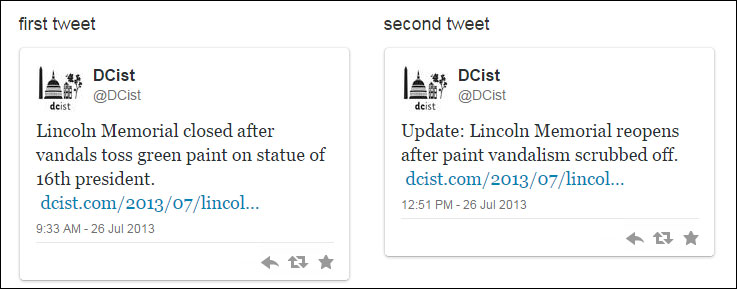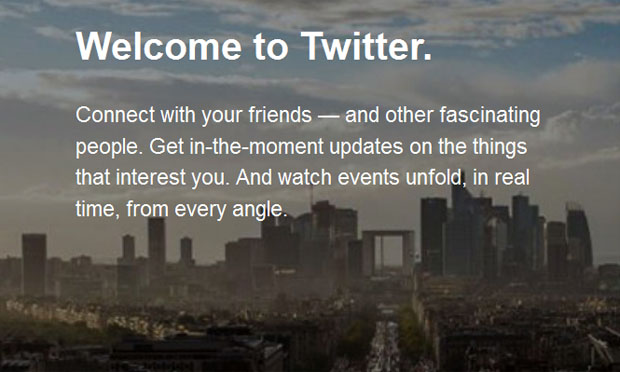As Derek Thompson of The Atlantic pointed out in a February 2015 post, the click-through rate for links shared on Twitter can be shockingly low, and little Web traffic is typically yielded by publishing sites, despite the superficial appearance of a frenzy of viral activity throughout Twitter’s ecosystem.
Likewise, in a first-of-its-kind big data study on the dynamics of Twitter — a 2014 paper titled “The Structural Virality of Online Diffusion” — Stanford’s Sharad Goel and Ashton Anderson and Microsoft Research’s Jake Hofman and Duncan J. Watts come to similar conclusions. After analyzing 1 billion links (news, images, videos, petitions) shared on the microblogging site, they find that only 1 of out every 3,000 produced a “large event,” or a sharing phenomenon that reached 100 additional persons beyond the seed node. Truly viral events — many multiple generations of sharing and several thousand adoptions at least — occurred only about once in a million instances. News content in particular did not do as well as other types of content, a phenomenon that Watts has said may be due to the fact that major network “hubs” with large audiences — “influencers,” as it were — on Twitter are not typically interested in news:
Of course, Twitter, Facebook and other online platforms also guage activity through softer analytics measures such as “impressions” — how many times content is served up in others’ feeds, and therefore may generate ambient awareness among viewers. (For Twitter, dividing the overall number of impressions by the number of clicks, shares, favorites, follows and other direct forms of content-related activity yields the “engagement rate.”)
All of this feeds into longstanding questions about how to best promote “diffusion” of everything from information to products; it is part of a vast body of marketing, economics and social science research that goes back many decades to pioneers such as Frank Bass and Everett Rogers, who both examined early adoption dynamics and diffusion models — and whose collective work has been subsequently cited tens of thousands of times. This research is complemented by an emerging field of computational social science research that is providing new insights into the digital world.
For example, a 2013 study from researchers at Stanford University on images shared on Reddit suggested that key factors for promoting sharing behavior include having the right titles, targeting the right community and posting at the right time. Further, a 2014 paper from the annual meeting of the Association for Computational Linguistics (ACL), “The Effect of Wording on Message Propagation: Topic- and Author-controlled Natural Experiments on Twitter,” offers some empirically based tips for publishers looking to hone their messages. The authors, Chenhao Tan and Lillian Lee of Cornell University and Google’s Bo Pang, take advantage of the fact that tweet authors sometimes share the same link multiple times with different wording. An example from their study’s associated website is as follows:

Such comparisons allow the researchers to isolate the wording itself as the primary variable or factor in producing engagement effects (they also try to control for differences in the time window of sharing). They computationally analyze thousands of tweets to determine which word patterns were most successful in spreading messages.
The study’s findings include:
- Making a direct appeal for others to share appeared to help. This could be seen with messages that included specific calls to action such as “rt,” “retweet,” “please,” “spread,” “pls” and “plz.”
- Longer, more informative tweets were generally more successful. Likewise, messages that employed words commonly used in the target community were helpful: “Although distinctive messages may attract attention, messages that conform to expectations might be more easily accepted and therefore shared.”
- Messages that imitated news headline style were more successful. The use of negative and positive words also seems to encourage retweets.
- The use of Twitter handles and second-person pronouns — “you” or “your” — in tweets do not necessarily increase sharing rates.
- Keeping vocabulary relatively simple can also help, as can the use of generalizations that have wide applicability.
The paper concludes that “helpful wording heuristics include adding more information, making one’s language align with both community norms and with one’s prior messages, and mimicking news headlines.” The researchers created a site where you can test your ability to judge which types of wording might attract the most shares: https://chenhaot.com/retweetedmore/quiz.
Related research: Among the chief centers of leading research activity in this area are the Microsoft Research and Facebook data science teams. A 2014 study from the Pew Research Center, “Mapping Twitter Topic Networks: From Polarized Crowds to Community Clusters,” identifies six basic “archetypes” of Twitter conversation. These include “polarized crowd” dynamics, whereby a liberal and conservative cluster are talking past one another on the same subject; old-fashioned “hub and spoke” dynamics, or “broadcast networks,”; “support” networks that form around customer complaints; “tight crowds” involving niche interests, hobbies and professional groups; and “brand clusters.” Because Twitter is a relatively open platform that lends itself to large-scale research, a huge volume of scholarship about it continues to be produced. Check out the Journalist’s Resource library for more studies.
Keywords: social media, Twitter, viral phenomena, network diffusion, technology


Expert Commentary